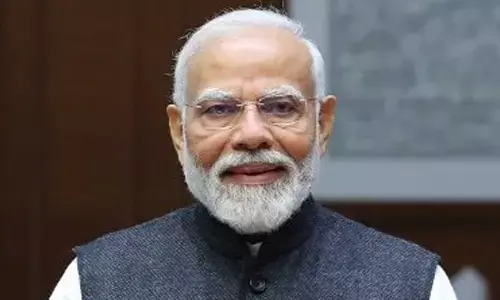e-commerce export hubs in PPP mode on anvil

India's e-commerce logistics industry to cross 10 bn shipments by FY28
Govt frames draft modalities
New Delhi: The government has sought proposals from the industry to set up e-commerce export hubs (ECEH) in the country for examination, support, and hand-holding.
Based on the proposal, further details, including software requirements for ECEH, to facilitate seamless and expeditious export clearances, will be firmed up, the Directorate General of Foreign Trade (DGFT) has said in a trade notice. In this regard, it said, draft modalities for operation of these hubs have been formulated. Based on draft modalities proposed, the government would like to initiate a pilot launch of ECEH.
"In this regard, detailed proposal(s) for setting up ECEH may be submitted to this directorate, for examination, support and hand-holding," the DGFT said. In the Budget, the government announced setting up of these hubs to promote exports through e-commerce medium in public-private-partnership (PPP) mode. Initially there are plans to set up 10-15 hubs in the country. These hubs would be designated areas, which would act as a centre for favourable business infrastructure and facilities for cross border e-commerce activities. The major objectives are to provide for predictability and shortest possible turnaround time for e-commerce exports, easy re-import for e-commerce returns or rejects, bringing various cross-border e-commerce stakeholders under one roof. At present, India's exports through this medium are only about $5 billion compared to China's $300 billion, annually.
There is a potential to take it to $50-100 billion in the coming years. The draft modalities for operations of these hubs talked about movement of goods from supplier's premises to ECEH; pre-screening of goods; design of these hubs; and process flow for customs clearance once a buyer is found. ECEH will have two physical components -- first will be the fulfilment area for packing, labelling, storing to take place after pre-screening and till a buyer is found; and the second will be a customs station where the goods will be customs cleared after the buyer is found, ready for dispatch. Through these hubs, small producers will be facilitated to sell to aggregators and then that aggregator will find markets to sell. Export products, which hold huge potential through this medium include jewellery, apparel, handicrafts and ODOP (one district one product) goods.
In such hubs, export clearances can be facilitated. Besides, it can also have warehousing facilities, customs clearance, returns processing, labelling, testing and repackaging.














